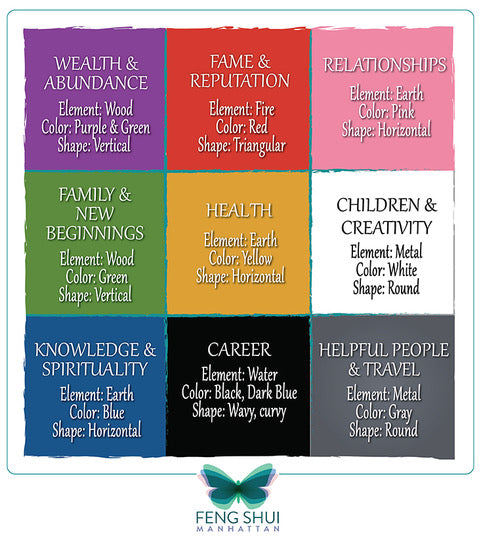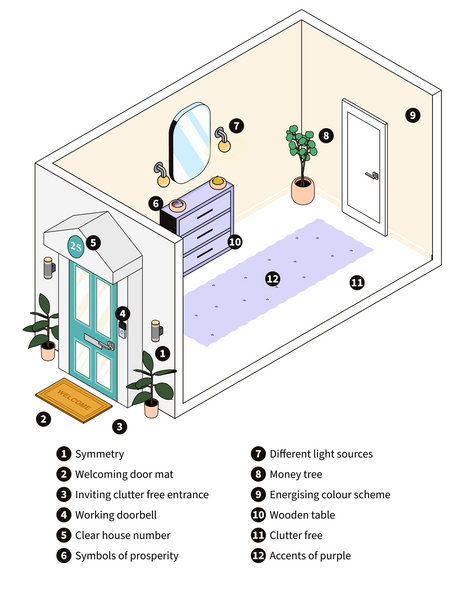How to Use Area Rugs to Define Spaces: A Wehomz Guide to Stylish Zoning
Introduction
In the evolving landscape of modern home design, open-concept living has become increasingly popular, offering a sense of spaciousness and fluidity. However, this design trend often presents a unique challenge: how to effectively delineate different functional areas without the use of traditional walls. This is where the humble area rug emerges as a powerful and versatile tool. More than just a decorative accent, an area rug can serve as a strategic design element, transforming undefined expanses into distinct, purposeful zones. For homeowners seeking to enhance both the aesthetics and functionality of their living spaces, understanding the art of rug placement is key.
At Wehomz, we believe in empowering you to create a home that is not only beautiful but also intuitively organized. This comprehensive guide will delve into the myriad ways area rugs can be utilized to define spaces, offering practical advice, design insights, and expert tips to help you master the art of stylish zoning. Whether you're looking to create a cozy reading nook, a dedicated dining area, or a clear pathway in a large room, discover how the right area rug can be the foundation of a well-defined and harmonious home.
The Power of the Area Rug in Open-Concept Living
Open-concept homes, while offering an airy and expansive feel, can sometimes lack the clear boundaries that define traditional rooms. This can lead to a sense of disorganization or a lack of intimacy in certain areas. Area rugs provide an elegant and non-permanent solution to this design dilemma. They act as visual anchors, grounding furniture arrangements and signaling a shift in purpose or activity within a larger space.
Why Defining Spaces Matters
Defining spaces within an open layout is crucial for several reasons:
•Enhanced Functionality: Clearly defined zones make a home more functional. A designated dining area, for instance, encourages family meals, while a distinct living room invites relaxation and conversation. Without these visual cues, spaces can feel less purposeful.
•Improved Flow: While seemingly counterintuitive, defining spaces with rugs can actually improve the flow of a room. By guiding foot traffic and creating natural pathways, rugs help to organize movement and prevent a chaotic feel.
•Aesthetic Cohesion: Rugs contribute significantly to the overall aesthetic of a room. They can introduce color, texture, and pattern, tying together disparate elements and creating a cohesive design narrative. A well-chosen rug can elevate the entire decor, making the space feel more polished and intentional.
•Acoustic Benefits: In large, open spaces, sound can echo and create an uncomfortable auditory environment. Area rugs, particularly those with thicker piles, help to absorb sound, reducing echoes and creating a quieter, more serene atmosphere. This is especially beneficial in high-traffic areas or homes with hard flooring surfaces.
As reported by Grand View Research, the global area rugs market size was estimated at USD 11.34 billion in 2023 and is expected to grow at a CAGR of 6.2% from 2024 to 2030 [1]. This growth underscores the increasing recognition of area rugs not just as decorative items, but as essential components of modern interior design, particularly in defining and enhancing living spaces.
The Rug as a Visual Boundary
A well-placed area rug serves as a subtle yet effective visual boundary. It creates an illusion of a distinct room within a larger space, without the need for physical walls. This is particularly useful in multi-functional rooms where different activities occur. For example, a large rug can delineate a living room area from a dining space in a combined living-dining room, or separate a home office nook from a bedroom. The edges of the rug clearly mark the beginning and end of a particular zone, providing a clear visual cue for both residents and guests.

Choosing the Right Size: The Foundation of Defined Spaces
The effectiveness of an area rug in defining a space largely hinges on its size and placement. A rug that is too small can make a room feel disjointed and unanchored, while one that is too large might overwhelm the space or negate the very purpose of defining zones. The goal is to create a harmonious relationship between the rug, the furniture, and the overall dimensions of the area you wish to define.
General Sizing Guidelines
When selecting an area rug, consider the following:
•Anchor Your Furniture: For living areas, the rug should be large enough to at least accommodate the front legs of all major furniture pieces (sofas, armchairs). Ideally, all furniture should sit entirely on the rug to create a truly cohesive grouping. This anchors the seating arrangement and clearly defines the conversation area.
•Dining Room Dimensions: In dining rooms, the rug should extend at least 24 inches beyond all sides of the dining table. This ensures that chairs remain on the rug even when pulled out, preventing them from catching on the rug's edge and maintaining the defined dining zone.
•Bedroom Serenity: For bedrooms, a large rug placed under the bed can create a soft, inviting island. The rug should extend beyond the sides and foot of the bed by at least 18-24 inches, providing a comfortable landing for your feet and visually expanding the sleeping area.
The Importance of Proportion
Proportion is key. Before purchasing, measure your space carefully and consider the scale of your furniture. Taping out the rug dimensions on your floor with painter's tape can be an excellent way to visualize how the rug will fit and if it effectively defines the intended zone.

How to Use Rugs for Visual Contrast and Cohesion
Beyond mere size, the design, pattern, and texture of an area rug play a crucial role in its ability to define spaces and contribute to the overall aesthetic. By strategically employing visual contrast or seeking cohesion, you can manipulate the perception of space and enhance your home's interior narrative.
Bold Patterns for Distinct Areas
One effective method for clearly delineating zones in an open-concept layout is to use rugs with distinct, bold patterns. For example, a vibrant geometric rug in the living area can immediately differentiate it from a more subdued, textured rug in the adjacent dining space. This visual separation adds personality and clear boundaries without the need for physical barriers. The contrast in patterns signals a change in function and atmosphere.
Neutral Rugs for Seamless Transitions
Conversely, if your aim is to maintain a more subtle division or to create a sense of seamless flow between areas, neutral-colored rugs are an excellent choice. A monochromatic color palette across different rugs can unify various zones, contributing to an open, airy, and cohesive feel. Neutral rugs allow other design elements, such as furniture, artwork, or architectural features, to take center stage, while still providing the foundational definition of space.
Layering Rugs for Depth and Customization
Layering rugs is a sophisticated design technique that adds texture, warmth, and a bespoke feel to any space. It's also a clever way to further define areas within a larger zone or to introduce subtle distinctions. For instance, placing a smaller, patterned rug on top of a larger, neutral-colored rug can create a focal point within a seating area, drawing the eye and adding an extra layer of definition. This method allows for creative expression and can enhance the perceived depth of a space.

Creating Focal Points and Anchoring Zones with Rugs
Area rugs are not just about defining boundaries; they are also powerful tools for creating visual focal points and anchoring furniture arrangements within an open-concept layout. By strategically placing a rug, you can draw attention to key elements of your design and create a sense of purpose for different areas.

Highlighting Key Furniture Pieces
One of the most effective ways to use an area rug is to highlight significant furniture pieces. Whether it's a luxurious sofa, a statement coffee table, or an elegant dining set, the right rug can serve as a backdrop that enhances and draws attention to these elements. The rug acts as a stage, elevating the importance of the furniture it encompasses and making it the central focus of that particular zone.
Anchoring Furniture Arrangements
In an open-concept home, furniture can sometimes feel like it's floating without a clear sense of place. Area rugs provide the necessary anchor, grounding furniture arrangements and creating a cohesive grouping. By centering your seating area or dining set on an appropriately sized rug, you establish a clear sense of unity and purpose within a larger, multifunctional space. This technique is particularly effective in large rooms where multiple furniture groupings might otherwise feel disconnected.
Mixing Rug Styles and Textures for Cohesion
The art of defining spaces with area rugs extends to the thoughtful combination of different styles and textures. This approach allows for a more dynamic and personalized interior, reflecting individual taste while maintaining overall design harmony.
Blending Modern and Traditional Rugs
For homeowners who appreciate an eclectic aesthetic, mixing modern and traditional rug designs can add a unique flair to an open-concept home. The key to success in this approach is maintaining a consistent color palette or a complementary set of tones. This ensures that while the styles may differ, the overall visual effect remains cohesive and intentional, preventing a chaotic or clashing appearance. For example, a contemporary geometric rug can be paired with a classic Persian-inspired rug if they share a common dominant color, creating an intriguing dialogue between old and new.
Complementing Room Colors with Rug Choices
When selecting rugs for open-concept homes, it is essential to consider how their colors will interact with your existing decor. Rugs offer an excellent opportunity to reinforce or introduce a color scheme. If your space features warm tones, choosing a rug with complementary warm shades will seamlessly tie the room together. Conversely, a rug with cool tones can provide a refreshing contrast in a predominantly warm space, adding depth and visual interest. The rug should act as a bridge, connecting various elements of the room through color and enhancing the overall visual harmony.
Practical Tips for Area Rug Maintenance in Open-Concept Homes
Maintaining the beauty and longevity of your area rugs, especially in high-traffic open-concept spaces, is crucial. Proper care ensures that your rugs continue to define your spaces effectively and contribute to a clean, inviting home environment.
Cleaning and Care Tips for High-Traffic Areas
Open-concept layouts often mean more foot traffic across all areas, including your rugs. To preserve their appearance and extend their lifespan, regular cleaning is essential:
•Regular Vacuuming: Vacuum your area rugs frequently, especially in high-traffic zones like living rooms and dining areas. This prevents dirt and debris from settling deep into the fibers, which can cause premature wear.
•Immediate Spill Treatment: Address spills immediately. Blot, don't rub, the affected area with a clean cloth. Depending on the spill, use appropriate cleaning solutions, always testing on an inconspicuous area first.
•Professional Cleaning: Consider professional cleaning every 12-18 months, particularly for rugs in busy areas. Professionals have the equipment and expertise to deep clean rugs without damaging their fibers.
Selecting Durable Rugs for Busy Households
Durability is a key consideration when choosing area rugs for open-concept homes, especially those with pets, children, or frequent guests. Opt for materials known for their resilience and ease of maintenance:
•Wool Rugs: Wool is a highly durable, naturally stain-resistant, and resilient fiber that can withstand significant wear and tear. It's an excellent choice for high-traffic areas due to its ability to bounce back from compression.
•Synthetic Blends: Rugs made from synthetic fibers like polypropylene, nylon, or polyester blends are often very durable, resistant to fading and moisture, and easy to clean. They are a practical and cost-effective option for busy households.
•Low Pile vs. High Pile: While high-pile rugs offer luxurious comfort, low-pile or flatweave rugs are generally more durable and easier to clean in high-traffic areas, as they trap less dirt and debris.
Conclusion
Area rugs are far more than just floor coverings; they are indispensable design tools for defining spaces, enhancing functionality, and elevating the aesthetic appeal of any home, particularly those with open-concept layouts. By strategically choosing the right size, pattern, and texture, and by understanding how to place them effectively, you can transform undefined expanses into beautifully organized and harmonious zones.
From creating cozy conversation areas to delineating elegant dining spaces, the possibilities are endless. High-quality rugs not only contribute to the visual appeal of your home but also offer practical benefits such as noise reduction and added comfort. At Wehomz, we are committed to helping you discover the perfect area rugs to bring your design vision to life, creating a home that is both stylish and intuitively functional.
Explore the extensive collection of Wehomz area rugs today and embark on your journey to beautifully defined living spaces. With the right rug, you can effortlessly create a home that reflects your style, meets your needs, and provides a welcoming atmosphere for everyone.
References
[1] Grand View Research. (2023). Area Rugs Market Size, Share And Growth Report, 2030.





















